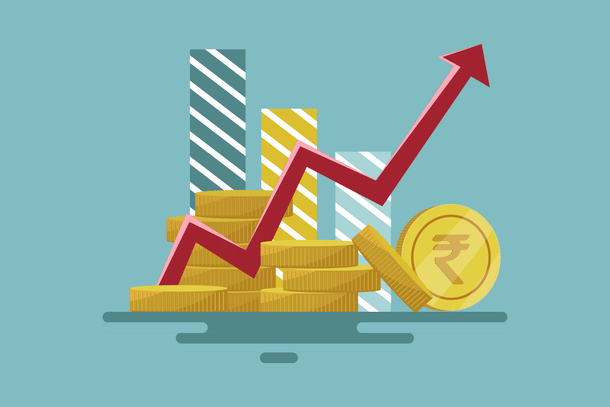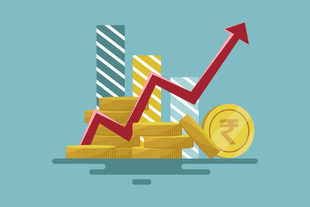Economy
Sorry, Cassandras. India's GDP Could Well Top 7 Per Cent In Fiscal 2023-24
R Jagannathan
Dec 01, 2023, 11:28 AM | Updated 11:28 AM IST
Save & read from anywhere!
Bookmark stories for easy access on any device or the Swarajya app.


One of the tragedies of Indian thinking is that we aim so low that when anything turns out better than what we imagined we discount it.
This is what is likely to happen as Cassandras scratch their heads over India’s surprisingly perky 7.6 per cent gross domestic product (GDP) growth in the second quarter of 2023-24 (July-September), when most economists predicted only 6.8 per cent.
The Cassandras are likely to be wrong again this year. Unless the world goes down the tubes precipitately, India should hit 7 per cent GDP growth this fiscal.
The Chief Economic Adviser (CEA), V Anantha Nageswaran, never given to hyperbole or excess optimism, had this to say after noticing the surprise numbers for Q2: “These numbers impart a certain upside to the 6.5 percent estimate for real GDP growth in FY24, but we will have to work on the numbers to see what kind of upside the current numbers impart for the full-year estimates. Until then, we will keep the estimate at 6.5 percent, except to signal that we are now more comfortable with this number than we were before.”
He suggested that our GDP growth numbers are probably being underestimated, given the tax buoyancy of just under two, which is “historically unprecedented”.
While it is sensible for the CEA to be conservative in his projections, the truth is the case for greater optimism has never been stronger than now. Let’s see how.
First, the high GDP numbers in H1 (7.7 percent average in two quarters) imply that you need only 6.3 per cent in H1 to cross 7 per cent. This is more than likely given that there is both revenue buoyancy and a spike in government spending.
Second, the prolonged festive season this year has helped keep even the third quarter busy, which means Q3 too will turn out to be reasonably strong in terms of growth.
In October, core sector output was at 12.1 per cent, driven partly by higher government spends on infrastructure capex. The low GDP growth base in Q3 of 2022, which was just 4.5 per cent, will ensure that Q3 of fiscal 2023-24 (October-December 2023) will remain robust. The low base effect will play out this quarter.
Third, economic activity tends to get a leg up during big election years. Four major states (Mizoram does not count) just held their elections this year, and incumbent governments in every one of them were busy wooing the electorate with cash handouts and high government spending.
The 'revadi' culture may be bad for the fisc in the medium term, but in the short term it puts money in the hands of the people, boosting demand.
Fourth, this growth is domestically driven — and could sustain. During April-October 2023, India’s merchandise and services exports grew barely 1 per cent in dollar terms to $440 billion, which means that it is only the domestic spending engine that is currently firing.
If exports start picking steam, as they show signs of doing, GDP growth can easily sustain well above the 6.3 per cent needed to hit 7 per cent in 2023-24.
Fifth, the wealth effect from a buoyant stock market is allowing consumers (especially in the middle and upper income groups) to spend on discretionary items like cars and domestic appliances ahead of income growth.
Indians have taken to consistent equity investments through the systematic investment plan (SIP) route. SIPs generated an all-time high amount of just under Rs 17,000 crore in October. There were over 73 million SIP accounts in September, and these inflows are neutralising the exit of foreign institutional investors on a large scale. India’s stock market is now driven by domestic savings.
Sixth, the robust stock market is enabling companies to raise equity from the markets at a premium. Tata Technologies, for example, saw a huge spike in its shares on listing, indicating that there is a huge market appetite for good quality stocks.
Seventh, the Indian real estate market is booming, and is now into its second year of a long-term upcycle. Since construction has one of the best employment multipliers for every rupee of investment, this augurs well for jobs growth. According to the government’s periodic labour force survey, unemployment is at a six-year low.
Eighth, if the state assembly election results turn out to be roughly as the exit polls indicate, two wins for BJP and two for Congress, the markets will be happy.
It may hold its breath temporarily during the general elections in case any nasty surprises look to be in store, but few people expect the BJP to lose. Even if the BJP falls below the majority mark of 272, the expectation is that it will return with allies in tow, given its huge access to resources.
While agriculture is expected to underperform, a good rabi harvest will set things right.
All signs indicate that India’s GDP growth rate will cross 7 per cent in fiscal 2023-24, boosted by high public and private capex. The investment cycle has turned.
The next spurt in growth will be led by private investment, to be followed by a rise in consumer spending next year. We are in a good space. Sorry, dear Cassandras.
Jagannathan is former Editorial Director, Swarajya. He tweets at @TheJaggi.





